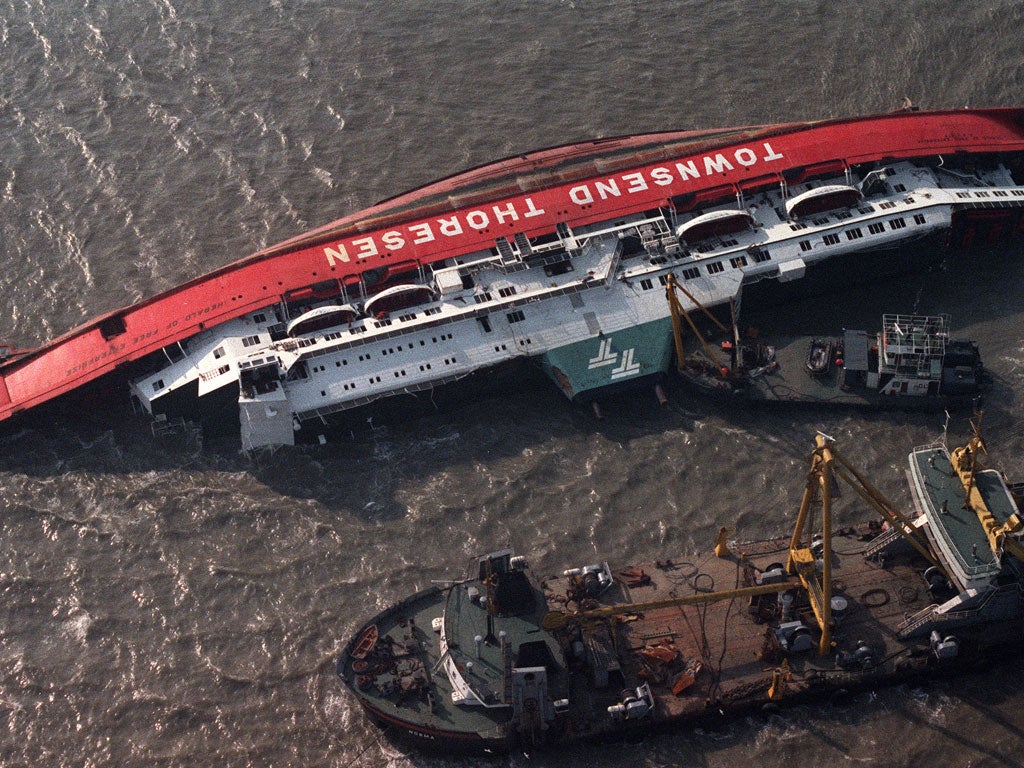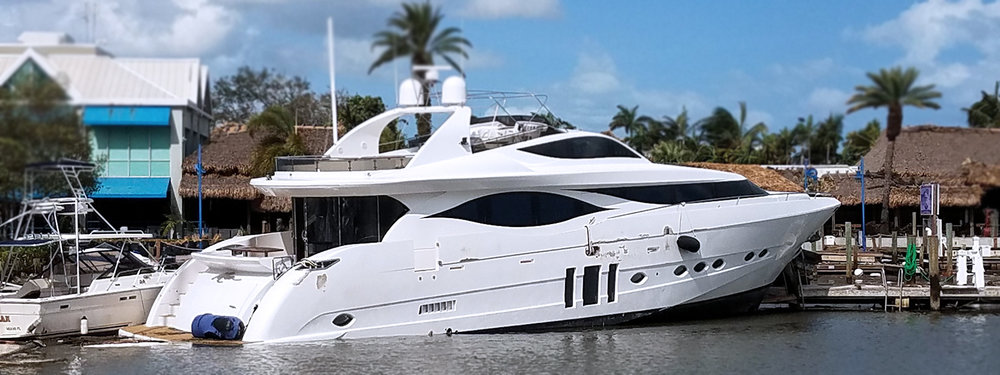
The Marine Accident Investigation Board (MAIB) was established in 1989 following a disaster which shocked the nation.
On the night of 6th March 1987, the MS Herald of Free Enterprise capsized moments after leaving the Belgian port of Zeebrugge, killing 193 passengers and crew. The modern 8-deck, roll-on-roll-off car and passenger ferry, owned by Townsend Thoresen, had been designed for rapid loading and unloading on the competitive cross-channel route and there were no watertight compartments. When the unthinkable happened and the bow-door was left open, the sea immediately flooded the decks and within minutes the vessel was lying on her side in shallow water. The tragic accident was found to be the result of negligence and a general culture of poor communication within the company. The ship was salvaged, put up for sale and when there were no takers, she was eventually sent to Taiwan to be scrapped.
Since the disaster many improvements have been made to the design of RORO ferries, including watertight ramps, indicators showing the position of bow-doors and the banning of undivided decks. But this incident which caused the highest death-count of any peacetime maritime disaster involving a British ship since 1919 was to be the initiator of the setting up of a government agency to investigate maritime accidents and incidents.
What is the MAIB?
It is a branch of the United Kingdom Department for Transport which is empowered to investigate any accident or hazardous incident occurring in UK waters regardless of the nationality of the vessel involved and accidents involving UK vessels worldwide. These vessels are usually merchant ships, fishing vessels and (with some exceptions) pleasure craft. Since 2009 the headquarters have been in Southampton, Hampshire, first at Carlton House and more recently at Mountbatten House. It is the marine equivalent of the Air Accidents Investigation Branch and the Rail Accident Investigation Branch, all of which report directly to the secretary for Transport. The MAIB comprises 4 experienced investigation teams and 35 members of staff. A small group of people to do a huge job.
The MAIB aims to improve safety for all those who work at, or travel by, sea. Its investigations are not intended to apportion blame nor establish liability; they do not enforce laws nor carry out prosecutions. They are strictly limited to establishing cause, promoting awareness of risks and preventing reoccurrence. Reporting of accidents to the MAIB is compulsory for all commercially operated vessels in UK waters and for all UK registered vessels worldwide. Between 1500 and 2000 incident reports are usually received annually. 40 to 50 of these will become full scale investigations with published reports. The selection of those to be investigated is based on the scope of lessons which can be learned as a result of the investigation.
The MAIB’s accident reports provide detailed analysis of each individual incident, with recommendations to all parties involved. These are backed up by annual safety reports reviewing the type of accidents and any lessons for the future and safety flyers are issued to expose an urgent risk. Lastly safety studies are carried out to inform policy makers, including the International Maritime Organisation (IMO), Maritime and Coastguard Agency (MCA) and Health and Safety Executive. For example, a study on merchant ships’ lifeboat training exercises during a 10-year period, revealed that 16% of their fatalities occurred during these training exercises and that not one single life was saved by a ship’s lifeboat in the UK in the same period.
So – What is an accident or hazardous incident?
An accident is defined as an undesired event that results in personal injury, damage or loss. It includes loss of life or major injury to anyone on board, the loss of a person from a ship, the actual or presumed loss of a vessel, material damage to her, or abandonment, collision, grounding or disablement. An accident could be caused by an on-ship occurrence such as the loss of cargo overboard or the unintended shift of cargo or ballast, causing the ship to list, the collapse of lifting equipment or snagging of fishing gear. Every master or skipper has a duty to examine each accident occurring to the vessel.
A major injury is one including fracture, loss of limb, loss of sight, requiring resuscitation, or leading to hypothermia or admittance to hospital for more than 24 hours. A serious injury is when the injured person is incapacitated for more than 3 consecutive days. A hazardous incident is often known as a “near miss”, when an accident nearly occurs.
All these incidents must be reported to the MAIB as quickly as possible so they can be investigated immediately and before vital evidence is lost. Serious injuries must be reported within 14 days. It is not compulsory to report hazardous incidents, but the MAIB encourages masters, skippers and owners to report them, as they can teach lessons just as relevant as those arising from accidents.
Examination and investigation

After the MAIB have received notification of an incident the inspectors will collect evidence and decide whether to conduct a preliminary investigation (PE). This will identify the cause and circumstances and establish whether a further investigation is required. If the investigation proceeds all available evidence is gathered.
The inspectors will want to see logbooks, charts and other documents (as well as the “black box” if the vessel is carrying one), and interview all those who may be able to shed light on what happened. On occasion they will employ the help of technical experts outside the Branch and sometimes they will use divers or remotely operated vehicles (ROVs) to carry out detailed examination of a wreck on the seabed. They are not, however, responsible for recovering bodies.
It can take as much as 7 months to a year to complete an investigation and publish a report and often the true cause of an accident turns out to be very different from the solution identified at the time.
Reports
After an investigation has been conducted, a report will be published analysing the safety issues and making recommendations for the future. Also, the MAIB produces a Safety Digest 3 times a year, comprising short, anonymous reports on the lessons learned from the investigations. All these are available to be read.